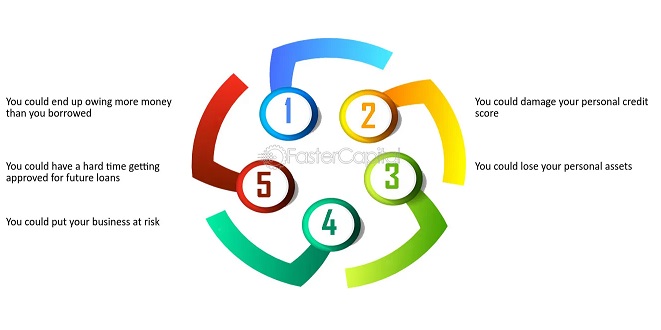Start “ng and running a business comes with inherent risks and rewards.” Securing financing to launch or expand your venture involves weighing those risks against expected returns. Unsecured business loans allow entrepreneurs access to capital without putting up collateral, but they come at a price – literally. Understanding the give-and-take of unsecured lending can help business owners make informed funding choices.
Balancing Upside Potential and Downside Danger
The allure of an unsecured business loan lies in its minimal barriers to approval. As the name suggests, these products don’t require borrowers to post assets like real estate, equipment, or investments to guarantee repayment. That gives applicants with limited pledges as security more options to access credit. It also typically translates to quicker funding delivery than secured loan products that entail lengthy underwriting procedures.
However, the inherent lack of collateral with unsecured business loans shifts more of the risk onto lenders. To offset that exposure, providers charge higher interest rates and fees.
Unsecured financing also has lower approval limits, shorter repayment terms, and stricter credit requirements. So, while easier to obtain, unsecured loans limit upside potential and provide less wiggle room if the borrowing business stumbles.
Weighing True Costs Against Expected Gains
The higher rates and accelerated payback schedules of unsecured business loans make their actual costs easy to underestimate. But securing fast financing for that new growth initiative likely won’t feel like a bargain if the repayment burden hinders its success. Prudent entrepreneurs run the numbers to forecast returns on investment (ROI) net of borrowing expenses.
Lenders also vet applicants thoroughly to manage default exposure, examining personal and business credit scores, financial statements, affiliations, and experience. Weak or limited operating history and credit marks may preclude approval outright or drive higher rates. Comparing options from multiple lenders allows business owners to balance affordability with accessibility to find the best fit.
Other Financing Avenues to Explore First
The right unsecured loan can provide just the capital a business venture needs to gain momentum. But funding that expansion by leveraging personal assets to secure more favourable interest rates generally makes strategic sense. Owners should also consider tapping friends and family investors, crowdfunding platforms, or government-backed programs before assuming the elevated costs and risks of unsecured borrowing.
If an unsecured loan still proves the best or only viable path forward, borrowers should scale request amounts to actual, near-term needs. Securing more financing than essential to fuel growth drives up avoidable interest payments. Businesses can constantly reapply for additional, incremental funding once they demonstrate consistent returns on prior lending.
Unsecured Business Loans Carry Both Risk and Reward
For eligible applicants, unsecured business loan can represent the necessary fuel to fund promising ventures without needing more hard collateral or operational history. Their underwriting flexibility and access to capital empower entrepreneurs to take risks that may unlock game-changing rewards.
However, such loans shift most of that risk onto the borrower through elevated interest rates, accelerated repayment terms, lower principal ceilings, and stringent credit requirements. Business owners must carefully weigh the benefits of easy access to lending against its compounding costs, while lenders offset their unsecured exposure via higher consumer prices.
Understanding that inherent trade-off allows entrepreneurs to strategically tap unsecured financing to elevate their ventures while avoiding undue strain. An unsecured loan may carry a business through the early stages of growth or provide emergency funding to weather the storm. Where its relatively high costs exceed expected returns, owners can pursue secured lending or tap personal assets as an alternative.
Setting Realistic Repayment Expectations
Accepting an unsecured business loan without fully grasping its repayment responsibilities can severely hinder an emerging enterprise. Before signing that dotted line, borrowers should model cash flows, capital outlooks, and growth milestones to determine if the required principal and interest payments fit reasonably within projected means.
Pushing repayment timelines out too far also heightens the risk of default. Seeking smaller unsecured loans with terms that align with realistic revenue growth helps businesses balance pressing capital needs with long-term financial health.
Read the Fine Print Thoroughly
An unsecured loan’s convenience and expedited access may seem like its most salient selling point. But understanding the full slate of associated fees, billing cycles, limits, and constraints before signing is even more critical. Skipping the fine print can transform an affordable financing strategy into an accounting nightmare or compliance violation.
Critical variables like early repayment policies, late fees, credit reporting practices, and default provisions vary widely by lender. So, too, there may limits on eligible uses for the borrowed capital. By knowing such factors upfront, businesses can model their financing costs accurately and direct funds strategically to drive returns.
Maintain Open Communication with Lenders
Even with thorough planning and vetting, changing fortunes or emerging challenges can make untenable elements of an unsecured loan. Entrepreneurs should quickly pick up the phone and call their lender if meeting obligations start trending off track.
Whether working out modified billing plans, restricted spending requirements, or temporary interest rate reductions, lenders have significant flexibility and motivation to help borrowers regain stable footing. But they can only entertain such options if businesses reach out proactively before defaulting. Open communication preserves both parties’ interests in fueling ventures that generate economic returns.
